#eperjes károly
Text


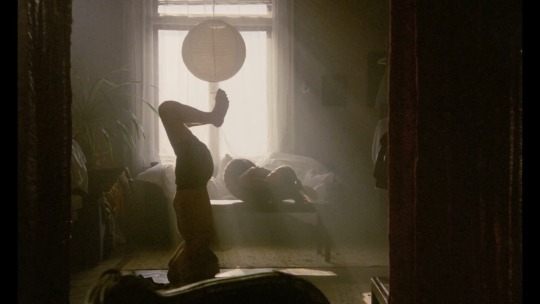
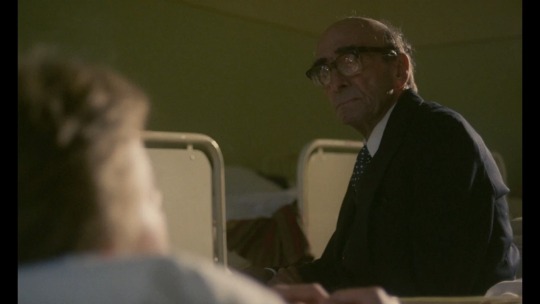
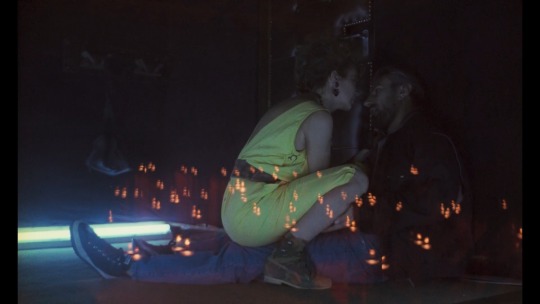

A nagy generáció (1986)
dir.: András Ferenc
dop.: Ragályi Elemér
#cinema#hungarian cinema#1980s#hungary#ragályi elemér#eastern europe#cserhalmi#cserhalmi györgy#eperjes károly#udvaros dorottya#koltai róbert#andrás ferenc
5 notes
·
View notes
Text
| ᴛʜᴇ ᴘᴏʀᴛʀᴀɪᴛ ᴏꜰ ʙᴇʟᴀ ʜᴀᴍᴠᴀꜱ

"In 1955 in Hungary there lived only one single person who could have not only conversed but actually exchanged views with Heraclitus, Buddha, Lao Tse and Shakespeare, and that in each one's mother tongue. If these four prophets of the human spirit had gotten off the plane in Tiszapalkonya, and if they had addressed the first laborer they came across, and if this had happened to be Béla Hamvas himself, after talking for three nights straight - during the day Hamvas had to carry mortar, but perhaps his guests would have given him a hand - well then, what might they have thought: if in this country the unskilled laborers are like this man, what then might the scholars be like? But had they looked around the country, they would have understood everything."
Géza Szőcs about Béla Hamvas¹
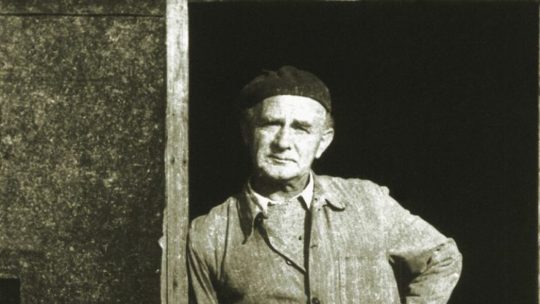
"Kierkegaard's study "The Critique of Time" came into my hands. No society, no state, no poetry, no thought, no religion, what is there is a corrupt and lying confusion. That's right, I thought. But it had to start sometime. I started looking for the dark spot. The proton pseudos, or the first lie. I went backwards from the middle of the last century to the French Revolution, to the Enlightenment, to rationalism, through the Middle Ages to the Greeks, the Hebrews, the Egyptians, and the primitives. I found the crisis everywhere, but every crisis pointed deeper. The dark spot is still ahead, still ahead. I made the typical European mistake, looking for the dark point outside myself, even though it was inside me."²
Béla Hamvas (23 March 1897 – 7 November 1968) was a Hungarian writer, philosopher, and social critic. He was the first thinker to introduce the Traditionalist School of René Guénon to Hungary. One of the greatest metaphysical thinkers of the 20th century, Béla Hamvas, due to his wide range of interests, studied literature, cultural history, history of science, psychology, philosophy and Eastern Asian languages. He was a non-conformist, whose aesthetic views were attacked by the Marxist ideologist György Lukács, resulting in the banning of his works from publication after 1947. Most of his writings were published posthumously, beginning from the early 1980s.
‘ɪ ᴀʙʜᴏʀ ʙᴇɪɴɢ ᴀ ʜᴇʀᴏ, ᴏʀ ᴀ ꜱᴀɪɴᴛ, ᴏʀ ᴀ ꜱᴀɢᴇ. ᴀɴᴅ ɪ'ᴍ ɴᴏᴛ ɪɴᴛᴇʀᴇꜱᴛᴇᴅ ɪɴ ᴍʏ ʙɪᴏɢʀᴀᴘʜʏ. ɪ ᴡᴀɴᴛ ᴛᴏ ʙᴇ ᴀ ɴᴏʀᴍᴀʟ ᴘᴇʀꜱᴏɴ.‘³

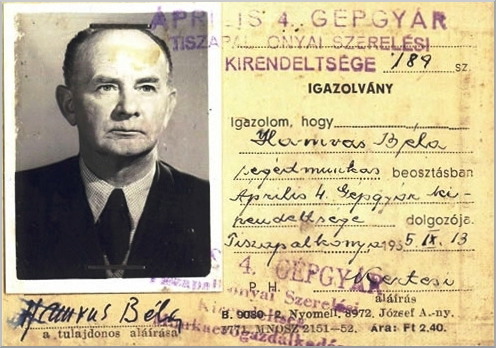
Short biography
1897 - Béla Hamvas was born on 23 March 1897 in Eperjes, Sáros County, Kingdom of Hungary (present-day Prešov, Slovakia). His father, József Hamvas was a Lutheran pastor, teacher of German and Hungarian, journalist and writer.
1898 - The family moved to Pozsony (Bratislava) in 1898, where Hamvas completed his basic studies in 1915.
1915–1917 - After graduation, like his classmates, he entered voluntary military service and was sent to the front in Ukraine. He was sent back to Budapest for hospital treatment due to severe traumatic shock, but just after recovery, he was drafted to the front line in western Italy. He never reached the battlefield, as his train was hit by a shell, and the wounded Hamvas was discharged.

1919 - In 1919 his father refused an oath of allegiance to the new nation of Czechoslovakia, whereupon his family was expelled from Bratislava. They moved to Budapest, where Hamvas attended Péter Pázmány Catholic University.
1919–1923 studied German and Hungarian Philology at the University of Budapest
1923–1926 - After graduation he became a journalist at the newspapers Budapesti Hírlap and Szózat. Hamvas considered this job shallow and menial, but he had to support his family (although his father received a pension from 1924). Three years later he quit, as he had found a better job in the main library of Budapest. He was appointed as a senior librarian in 1927.
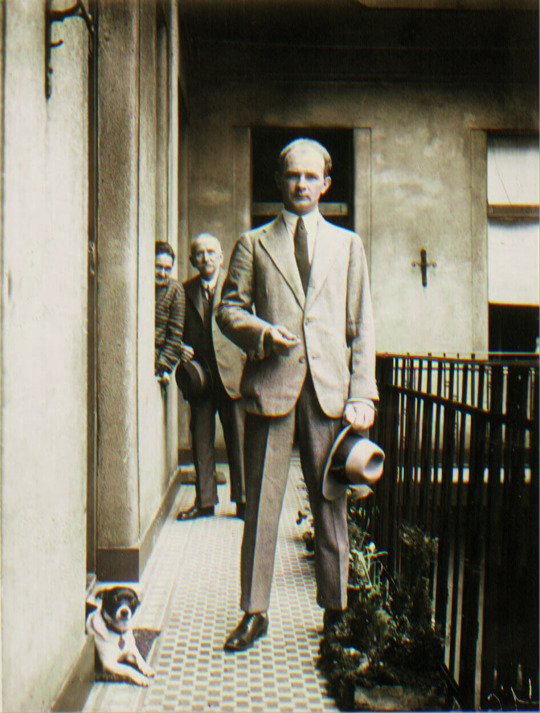
1927–1948 librarian in the Central Library of Budapest. By this time he was writing articles, reviews and essays for 25 different journals.
1935–1936 together with Károly Kerényi, founded Sziget, a journalist and intellectual circle
1937 married the writer Katalin Kemény. (He married Ilona Angyal in 1929, but divorced in 1936 to marry Katalin Kemény in 1937. She was his partner in founding the Sziget circle, a literary group which later gained prominent members like Antal Szerb, Károly Kerényi, László Németh, and the composer Antal Molnár.)
1940–1944 drafted into military service; posted to the Russian front in 1942; managed to escape. Nearly 20 years of library work was ended by World War II. Hamvas was drafted for military service three times. He continued his literary work while on the front lines - translating Lao Tse and Heraclitus among others. His first essay collection was published in 1943.
1940s - A creative friendship develops between him and one of the greatest poets and thinkers of our time, Sándor Weöres. They become pen pals, master and disciple, and between them they have a significant influence on several of their works.
1945 - The couple survived the siege of Budapest. Their apartment was hit by bombing, destroying his library and manuscripts. Despite the Soviet siege and repeated harassment by the authorities, 1945 to 1947 were his most fruitful years.
1945–1948 editor of the Leaflets of the University Press
1948 - In 1948 he was placed on the B-list⁴ (banned from publishing) by the Soviet installed socialist government, and was forced into retirement from his library job. Although he had published more than 250 works before his ban, most of Hamvas's body of work was written anonymously later on. He got a licence to farm in the garden of his brother-in-law in Szentendre, and tended plants there between 1948 and 1951, during which time he also completed Karnevál, one of his major essays.
1948–1951 officially qualified as a labourer
1951–1964 - Between 1951 and 1964 he was employed as an unskilled worker in power plants in Tiszapalkonya, Inota and Bokod, under harsh conditions. Whenever he had spare time he translated from Sanskrit, Hebrew and Greek, and wrote about the Cabala, Zen, and Sufism. Between 1959 and 1966 he completed Patmosz, his last major work.
1964 retired from work at the age of 67
1968 - Aged 67, he finally received a pension. Béla Hamvas died of a hemorrhagic stroke on 7th of November in 1968. He is buried in Szentendre.
1990 - In 1990⁵ he posthumously received the Kossuth Prize.
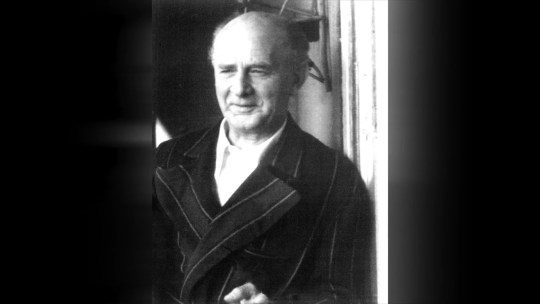
He was a great thinker and essayist who integrated Eastern and Western traditions as well as posing many serious questions about the modern age, together with the possibility of resolving them. According to one of his central thoughts: "The present eon, since 600 B.C. stands in the sign of personal salvation. Only since this time is there a notion of humanity, because there is only one single collective category of personality and this is humanity."
Béla Hamvas found his form of expression in the essay, a genre at once literary and philosophical. His early essays were published in Magyar Hüperion (1936, Hungarian Hyperion), marking the end of his first period of thinking, to be followed by Szellem és egzisztencia (1941, Spirit and Existence), an essay discussing the philosophy of Karl Jaspers, one of the main inspirations for Hamvas’s thinking. He published a selection of essays on literature, psychology, philosophy and cultural history in A láthatatlan történet (1943, The Invisible Story). Analyzing the spiritual crisis of the age, Hamvas read himself into the metaphysical tradition, the collective spiritual knowledge of humanity conveyed by sacred books. His collection Scientia Sacra (the first six volumes, 1942–43) served to direct the attention of the age towards the philosophy of the Far East (The Upanishads, Tao Te King, The Tibetan Book of the Dead and others) and European mysticism. From 1945 Hamvas belonged to the spiritual renaissance for three years, during which he edited the series Leaflets of the University Press, held lectures and published the metaphysical Anthologia humana: Ötezer év bölcsessége (1946, Anthologia Humana – The Wisdom of Five Millennia), the fourth edition of which was banned and pulped by the communist regime. His essays written together with his wife on the history of art Forradalom a művészetben: Absztrakció és szürrealizmus Magyarországon (1947, Revolution in Art: Abstraction and Surrealism in Hungary) survey Hungarian art from Károly Ferenczy, Tivadar Csontváry Kosztka and Lajos Gulácsy up to the activity of the “European School.” Hamvas saw in surrealism and abstract art the heritage of magic, the “tremendous presence of a higher existence”, and opposed “realistic” art. This concept of modern art was attacked by the Marxist ideologist, György Lukács, and Hamvas was dismissed from the library and silenced for the rest of his life. His writings were published in samizdat.
‘‘ᴛʜᴇ ɢᴏʟᴅᴇɴ ᴀɢᴇ ɪꜱ ɴᴏᴛ ᴀ ʜɪꜱᴛᴏʀɪᴄᴀʟ ᴇʀᴀ, ʙᴜᴛ ᴀ ꜱᴛᴀᴛᴇ, ᴀɴᴅ ɪꜱ ᴛʜᴇʀᴇꜰᴏʀᴇ ᴘʀᴇꜱᴇɴᴛ ɪɴ ᴀʟʟ ᴛɪᴍᴇꜱ; ɪᴛ ᴊᴜꜱᴛ ᴅᴇᴘᴇɴᴅꜱ ᴏɴ ᴡʜᴇᴛʜᴇʀ ᴛʜᴇʀᴇ ɪꜱ ꜱᴏᴍᴇᴏɴᴇ ᴛᴏ ᴍᴀᴋᴇ ɪᴛ ʜᴀᴘᴘᴇɴ.‘‘⁶
His essays are grounded in tradition, their sense of humour is granted by knowledge, and humour, in turn, grants their freedom. Unicornis, Titkos Jegyzőkönyv, Silentium (1948–51, Unicorn, Secret Protocol, Silentium) were published as late as 1987, but were written alongside Hamvas’s great novel, Karnevál (1948–51, Carnival, published in 1985). This Magnum Opus, also called a “catalogue of fate”, a “human comedy”, spans continents and ages, Heaven and Hell. Hamvas’s three shorter novels, Szilveszter (1957, New Year’s Eve), Bizonyos tekintetben (1961, From a Certain Aspect), Ugyanis (1966–67, Therefore) were published together in 1991, followed by his collection of essays, Patmosz (1959–1966; Patmos) in 1992, whose title alludes to John the Apostle’s exile to the island of Patmos, and the second part of Scientia Sacra: az őskori emberiség szellemi hagyománya II. rész: A kereszténység (1960–64, Scientia Sacra – Spiritual Heritage of Mankind, part II. Christianity) published in 1988.
‘‘ᴛʜᴇʏ ꜱᴀʏ ᴛʜᴀᴛ ʟᴏᴠᴇ ᴍᴀᴋᴇꜱ ʏᴏᴜ ᴀ ᴘᴏᴇᴛ. ᴏꜰᴛᴇɴ. ꜰʀɪᴇɴᴅꜱʜɪᴘ ᴍᴀᴋᴇꜱ ʟɪꜰᴇ ᴘᴏᴇᴛɪᴄ ᴀɴᴅ ᴘᴏᴇᴛʀʏ. ᴘᴏᴇᴛʀʏ ꜱᴏᴏɴ ᴅɪᴇꜱ ᴏᴜᴛ ᴏꜰ ʟᴏᴠᴇ, ꜰᴏʀ ʟᴏᴠᴇ ʜᴀꜱ ᴇᴠᴇʀʏᴛʜɪɴɢ ʙᴜᴛ ᴛʜᴇ ᴍᴇᴀɴꜱ ᴛᴏ ᴜɴɪᴛᴇ ᴛʜᴇ ᴛᴡᴏ ɢʀᴇᴀᴛᴇꜱᴛ ᴏᴘᴘᴏꜱɪᴛᴇꜱ ɪɴ ᴛʜᴇ ᴜɴɪᴠᴇʀꜱᴇ, ᴍᴀɴ ᴀɴᴅ ᴡᴏᴍᴀɴ. ꜰʀɪᴇɴᴅꜱʜɪᴘ ɪᴛꜱᴇʟꜰ ɪꜱ ᴛʜɪꜱ ᴘᴏᴇᴛɪᴄ ʀᴇʟᴀᴛɪᴏɴꜱʜɪᴘ. ᴀɴᴅ ᴘᴏᴇᴍꜱ ᴀʀᴇ ɴᴏᴛ ᴡʀɪᴛᴛᴇɴ, ᴛʜᴇʏ ᴀʀᴇ ʟɪᴠᴇᴅ.‘‘

‘‘- ʏᴏᴜ ʜᴀᴠᴇ ᴀ ᴠᴇʀʏ ʙɪɢ ᴍᴏᴜᴛʜ. ʏᴏᴜ ᴍᴜꜱᴛ ʙᴇ ᴀɴ ᴀɴᴀʀᴄʜɪꜱᴛ. - ᴀɴᴀʀᴄʜɪꜱᴍ, ɪ ᴛʜɪɴᴋ, ɪꜱ ᴛʜᴇ ᴜʟᴛɪᴍᴀᴛᴇ ᴇxᴘʀᴇꜱꜱɪᴏɴ ᴏꜰ ᴏᴘᴛɪᴍɪꜱᴍ. - ʜᴏᴡ ꜱᴏ? - ᴡʜʏ ᴀɴ ᴀɴᴀʀᴄʜɪꜱᴛ? ʙᴇᴄᴀᴜꜱᴇ ʏᴏᴜ ꜱᴛɪʟʟ ʙᴇʟɪᴇᴠᴇ ᴛʜᴀᴛ ᴛʜᴇ ꜱᴄᴜᴍ ᴛʜᴀᴛ ɪꜱ ʜᴜᴍᴀɴ ꜱᴏᴄɪᴇᴛʏ ᴄᴀɴ ꜱᴛɪʟʟ ʙᴇ ꜱᴀᴠᴇᴅ, ᴀᴛ ʟᴇᴀꜱᴛ ʙʏ ᴀɴᴀʀᴄʜʏ.‘‘⁷
¹ Szőcs Géza: … és akiket nem. Életünk, 1987/9.m 852.)
² Hamvas Béla, Patmosz I-II. (Patmos, 1959-1966), Medio, 2004
³ Béla Hamvas, ‘Unicornis – Summa Philosophiae Normalis’, Silentium, Titkos jegyzőkönyv, (Budapest: Vigilia, 1987), 190.
⁴ The B-list covered the public employees and state officials in post-war Hungary who had become politically undesirable from some point of view. About 100,000 people were included in 1945-6 as the Ž Hungarian Workers-Party (MDP) prepared to monopolize power. The mass dismissals that occurred were intended primarily as a political cleansing process and only secondarily as a way of reducing public spending. The screening process was conducted by a three-man committee, which sorted public employees and state officials into categories A (reliable), B (to be dismissed, but re-employable within a year) and C (to be dismissed as politically unreliable and not re-employed).
⁵ In the late 1980s, Soviet control began to slacken, paving the way for the change of political regime in 1989, with 23 October marking the birth of the new Republic of Hungary. The first democratic national and municipal elections took place in 1990.
⁶ Hamvas Béla, A bor filozófiája (THE PHILOSOPHY OF WINE, written in 1945), Medio, 1998
⁷ Hamvas Béla, Szilveszter (1957, New Year’s Eve), Bizonyos tekintetben (1961, From a Certain Aspect), Ugyanis (1966–67, Therefore) - Három regény (Three novels)
#bela hamvas#hamvas béla#metaphysician#essayist#traditionalism#platonic#hermetic philosophy#universalism#gnosticism#sufism#buddhism#hinduism
2 notes
·
View notes
Text
"Eperjes Károly közpénzt kapott arra, hogy dokumentumfilmben járjon utána az élő istennek"
Eddig is súlyos milliárdokat basztak el a semmire meg pszichiátriai esetekre....Eperjesnek legalább papírja is van róla a
zártosztályról :)
Na....amikor Vonáék mérkőznek a Kukapárttal a kormányzásért akkor Eperjes is megtalálja Istent végre nekünk......Gyáógyfűűde :DDD
0 notes
Link
0 notes
Text
Diplomamunka a József Attila Színház színpadán
Diplomamunka a József Attila Színház színpadán
Negyedéves szakmai gyakorlatát tölti a József Attila Színházban Eperjes Károly-Szalma Tamás színész osztályának hat növendéke ( Horváth Barnabás, Juhász Jázmin, Kucskár Kamilla, Labán Roland, Nagy Ferenc, Sinka Edina, Varga Levente).
A fiataloknak lehetőségük van arra, hogy nemcsak egy rendezővel dolgozhatnak egy professzionális előadásban, hanem olyan színész kollégákkal játszhatnak együtt, akik…

View On WordPress
0 notes
Text
Kiderült, kik a Magyar Mozgókép Díj idei jelöltjei
Kiderült, kik a Magyar Mozgókép Díj idei jelöltjei
Immár publikus, hogy a Magyar Mozgókép Díj előzsűri bizottsága kategóriánként melyik 5 alkotást és alkotót jelöli 2022-ben a Magyar Mozgókép Díjakra.
A feleségem története, A játszma, a Külön falka, Az unoka és a Magyar Passió versenyeznek a legjobb nagyjátékfilm kategóriában.
Fazakas Péter, Deák Kristóf, Enyedi Ildikó, Papp Gábor Zsigmond és Eperjes Károly a legjobb rendező díj öt…

View On WordPress
0 notes
Photo

Jön a Magyar Filmdíj 2020 A Magyar Filmakadémia Egyesület a Nemzeti Filmintézet támogatásával 2020. február 26-29. között a Corvin moziban rendezi meg a Magyar Filmdíj 2020 - Magyar Mozgókép Szemlét.
#Béres Ilona#Cserhalmi György#Eperjes Károly#hír#Magyar Filmakadémia Egyesület#Magyar Filmdíj#Magyar Filmdíj 2020#Magyar Mozgókép Szemlw#Nemzeti Filmintézet#News#Pécsi Ildikó#Pesti Vigadó#Szabó István#Watchaholics
0 notes
Photo

Jön a Magyar Filmdíj 2020 A Magyar Filmakadémia Egyesület a Nemzeti Filmintézet támogatásával 2020. február 26-29. között a Corvin moziban rendezi meg a Magyar Filmdíj 2020 - Magyar Mozgókép Szemlét.
#Béres Ilona#Cserhalmi György#Eperjes Károly#hír#Magyar Filmakadémia Egyesület#Magyar Filmdíj#Magyar Filmdíj 2020#Magyar Mozgókép Szemlw#Nemzeti Filmintézet#News#Pécsi Ildikó#Pesti Vigadó#Szabó István#Watchaholics
0 notes
Photo



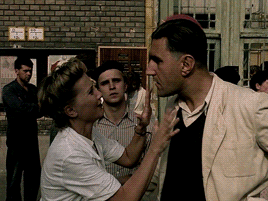

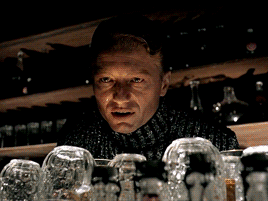


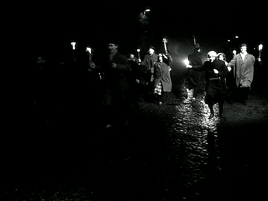

Eldorádó (1988)
#Eldorádó#The Midas Touch#Géza Bereményi#Károly Eperjes#Péter Andorai#Géza D. Hegedűs#Enikő Eszenyi#My Stuff
3 notes
·
View notes
Photo

beszt tím. evör.
#1993#fidesz#football#orbán viktor#hegyi iván#hungary#deutsch tamás#kövér lászló#eperjes károly#history#vintage#old stuff
3 notes
·
View notes
Text
MEGVANNAK A MAGYAR MOZGÓKÉP DÍJAK IDEI JELÖLTJEI
Immár publikus, hogy a Magyar Mozgókép Díj előzsűri bizottsága kategóriánként melyik 5 alkotást és alkotót jelöli 2022-ben a Magyar Mozgókép Díjakra. A feleségem története, A játszma, a Külön falka, Az unoka és a Magyar Passió versenyeznek a legjobb nagyjátékfilm kategóriában. Fazakas Péter, Deák Kristóf, Enyedi Ildikó, Papp Gábor Zsigmond és Eperjes Károly a legjobb rendező díj öt…

View On WordPress
0 notes
Photo

Könnyű testi sértés: a sok közül az egyik kiváló Szomjas György-film 1983-ból.
(Erdős Mariann, Eperjes Károly, Andorai Péter, Schuster Lóri, Deák Bill Gyula, Usztics Mátyás, Újlaki Dénes, Bikácsy Gergely...)
48 notes
·
View notes
Quote
A hír: Eperjes Károly az 50-es évek keresztény��ldözéséről forgat filmet.
---
Egy mondatban: Hiányzott ez már, mint abuzált ministráns fiúnak a püspöki látogatás.
6 notes
·
View notes
Link
a kozervatív filmművészet most megmutatja. átütő sikert jósolok!
3 notes
·
View notes